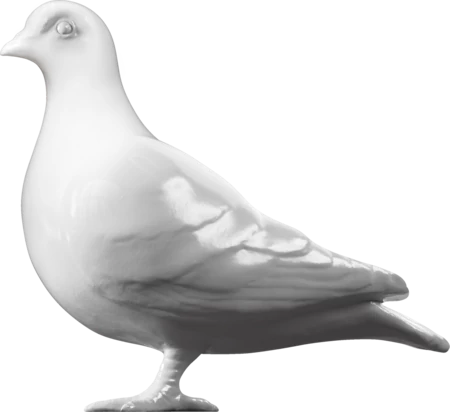London Museum Docklands announces Secrets of the Thames: Mudlarking London’s lost treasures
16 September 2024
- The first major exhibition on mudlarking will explore fascinating finds from the Thames foreshore, an internationally important archaeological site that holds thousands of years of London’s history.
- A Tudor wool knitted hat is one of the rare new discoveries, preserved by the Thames, that is set to go on display for the first time.
- Other objects will include a Medieval gold ring, an elaborately decorated Viking era dagger and a pair of false teeth from the 18th century.

Mudlark Alessio Checconi combs the Thames foreshore.
London Museum Docklands has today announced its next major exhibition Secrets of the Thames: Mudlarking London’s lost treasures (4 April 2025 – 1 March 2026). The first major exhibition on mudlarking, it will explore fascinating finds from the Thames foreshore, an internationally important archaeological site, and the role of mudlarks in uncovering thousands of years of human history. Historically a trade of the Victorian poor, in recent years mudlarking has grown to be a popular hobby for history lovers, with licensed mudlarks uncovering many significant new finds from the Thames.
Amongst the fascinating objects set for display in the exhibition will be a Tudor knitted cap, discovered on the foreshore 500 years after it was lost. Inspired by similar velvet designs worn by the wealthy during this period, the more affordable wool version is a rare survivor that has been preserved by the unique conditions of the Thames. It will sit alongside other gems including a medieval gold ring inscribed with the message: ‘For love I am given’ and an ancient Viking era dagger personalised with the name of its owner, Osmund. Other curiosities and everyday objects range from clay pipes and 18th century false teeth, to Medieval spectacles and a pilgrim’s badge decorated with phalluses.
Secrets of the Thames will recreate an experiential foreshore studded with cases of mudlarked objects. The exhibition will include many never-before-seen finds that have recently joined the museum’s collection, revealing the often surprising stories behind these objects that continue to inform our understanding of London. There will be a behind-the-scenes glimpse at how finds are recorded and researched at the museum and insights from mudlarks themselves about how they investigate and curate their collections.
Kate Sumnall, Curator at London Museum, said: “We are lucky in London to have this amazing tidal river environment that has preserved so much of our past. It is the longest archaeological site in London and here we find an unbelievably rich selection of finds, from this astonishingly well preserved Tudor hat to the ubiquitous clay pipes that were very much the disposable vapes of their day. Thanks to the dedication and expertise of today’s mudlarks, we are constantly uncovering new objects that inform our understanding of history. Secrets of the Thames will showcase some of these fascinating objects and their journey from discovery to joining the museum. Above all, it will be an exploration of love and desire, faith and loss, migration, community and culture. The stories of generations of people who have visited the city or called it home.”
The River Thames has been a centre of human activity for over 10,000 years. Below its waters lay lost or discarded items, from the ordinary to extraordinary, that paint a picture of Britain’s past. From prehistoric communities that camped, hunted and farmed along the foreshore, to the arrival of Romans who founded Londinium, and Vikings who travelled by water to expand their territory into Britain. Here lies evidence of Britain’s early days of exploration and exploitation as London burgeoned into the country’s first port of empire. Each new departure and arrival has left traces behind relating to all aspects of human life. A living time capsule that tells stories of the ways people have survived, made a living, or enjoyed their leisure time in the city.
Early records of mudlarking date back to the mid-1800s when London’s poorest communities would search the foreshore for bits of metals, rope and coal to make their living. Subject to dangerous tides, it was a job often undertaken by children who would brave cold waters, broken glass and other hazards to find items that they could sell to feed their families.
Today it is the preserve of licensed mudlarks who search the foreshore to find historical treasures revealed at low tide. The wet and clay environment of the river preserving objects that would usually deteriorate elsewhere.
It’s a hobby that has grown in popularity in recent years, with the Port of London Authority (PLA) having seen a significant increase in applications for licenses, particularly since 2020.
On average, the Portable Antiquities Scheme London Museum Finds Liaison Officer records around 700 finds per year and identifies around 5,000, with a small number acquired into the museum’s collection. All mudlarks on the River Thames must have a valid permit from the Port of London Authority and all finds 300 years old or more must be reported to the Finds Liaison Officer at London Museum.
Secrets of the Thames: Mudlarking London’s lost treasures opens at London Museum Docklands on 4 April 2025. Tickets go on sale from February 2025.
For press enquiries please contact Mariam Hussein, Media Officer on [email protected] / 07713 565805 or Ashton Bainbridge, PR Manager on [email protected] / 07967 313176
Notes to editors
- All mudlarks on the River Thames must have a valid permit from the Port of London Authority
- All finds from the Thames foreshore belong to the Port of London Authority.
- All finds 300 years old or more must be reported to the Finds Liaison Officer at London Museum who records them on the Portable Antiquities Scheme managed by the British Museum.
- Tickets for Secrets of the Thames will go on sale in February 2025 and will be available via the museum’s website:
- Find out more about mudlarking permits.



